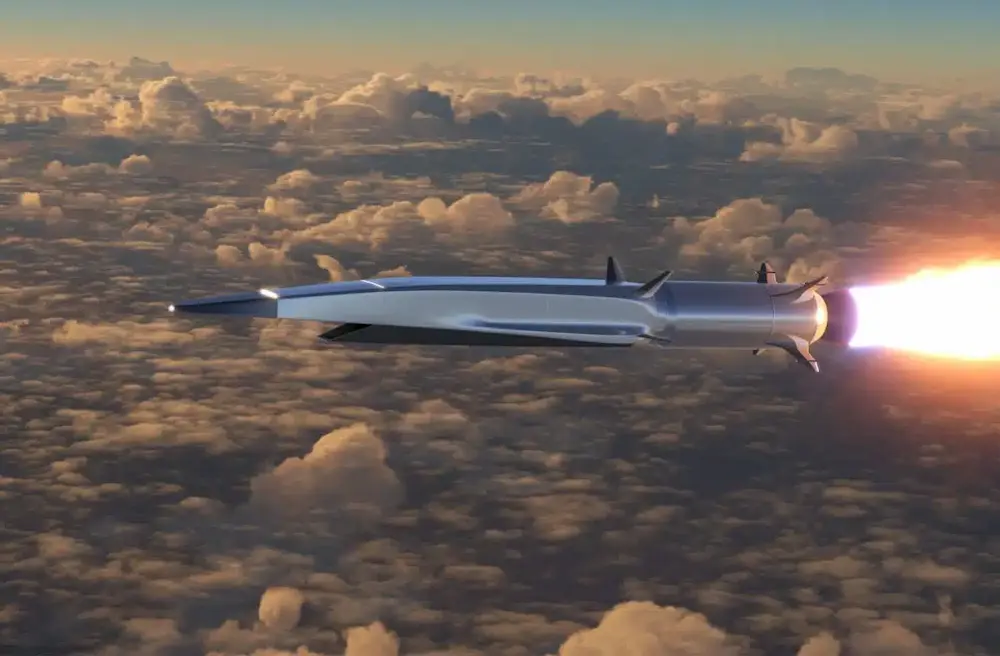
China’s 1,000-km hypersonic air-to-air missile could redefine air combat and threaten India’s aerial assets
On July 28, 2025, China reportedly tested a hypersonic air-to-air missile with a staggering range of 1000 kilometres, sending shockwaves through global defense circles. If confirmed, this development marks a seismic shift in aerial warfare capabilities, one that could redefine air dominance and force nations like India to urgently reassess their strategic posture.
What Makes This Hypersonic Air-to-Air Missile a Game-Changer?
Developed by the China Airborne Missile Academy (CAMA), the missile reportedly reaches speeds beyond Mach 5, placing it firmly in the hypersonic category. Unlike traditional Beyond Visual Range (BVR) missiles, which typically max out at 350–400 km, this new weapon could strike targets before they even enter radar range.
Its primary targets? High-value aerial assets like stealth fighters (F-22, F-35), AWACS, and AEW&C aircraft, platforms crucial for early warning, surveillance, and battlefield coordination. At such speeds and distances, even stealth technology may not offer protection.
Strategic Shockwaves Across the Indo-Pacific
The implications of this test ripple far beyond China’s borders. With tensions simmering in the Taiwan Strait, South China Sea, and East Ladakh, Beijing’s new capability could tilt the balance of power in contested airspaces. Experts warn that this missile could allow Chinese jets to neutralize enemy aircraft without leaving their own airspace, giving them a decisive edge in any aerial conflict.
For countries like Japan, Taiwan, and the United States, this development demands a rethink of air combat doctrines. But for India, the stakes are uniquely high.
India’s Capability Gap: A Cause for Concern?
India’s current air-to-air missile arsenal includes the Astra Mk-1 (operational), Astra Mk-2 (near completion), and the Astra Mk-3, which is still under development. The longest-range variant aims to reach 400 km, a significant leap but still less than half the range of China’s new missile.
This gap could leave India vulnerable in scenarios involving long-range aerial engagements, especially over the Himalayas or the Indian Ocean. Surveillance platforms like Netra AEW&C or Phalcon AWACS, which are vital for airspace monitoring, could be at risk if China deploys this missile operationally.
Technology and Testing: The Hypersonic Challenge
China’s missile reportedly underwent extreme heat-resistance tests in arc-heated wind tunnels—facilities typically reserved for space missions. These tests simulate the intense friction and temperatures encountered during hypersonic flight, ensuring the missile’s structural integrity and guidance systems remain intact.
India, while making strides in hypersonic research through DRDO and ISRO, still lags behind in operational deployment. Experts are calling for accelerated collaboration between these agencies to fast-track indigenous hypersonic propulsion and tracking technologies.
Strategic Messaging or Real Threat?
Some analysts caution that China’s announcement may be part of psychological warfare, a strategic move to rattle adversaries and project dominance. But even if the missile is not yet fully operational, the intent and capability behind its development are clear.
India cannot afford to dismiss this as mere posturing. The possibility alone demands a proactive response, both in terms of technology development and doctrinal evolution.
What Should India Do?
Here’s what India can consider:
- Accelerate Hypersonic Programs: Fast-track Astra Mk-3 and other hypersonic initiatives through DRDO-ISRO synergy.
- Upgrade Radar and Tracking Systems: Invest in advanced sensors capable of detecting high-speed threats at long ranges.
- Enhance Electronic Warfare Capabilities: Develop countermeasures to disrupt missile guidance and targeting.
- Strengthen Strategic Partnerships: Collaborate with allies like the U.S., France, and Israel for tech sharing and joint development.
- Reassess Air Combat Doctrine: Adapt tactics to account for long-range missile threats and stealth vulnerabilities.
Final Thoughts: A Wake-Up Call
China’s hypersonic missile test is more than a technological milestone, it’s a strategic message. It signals the dawn of a new era in aerial warfare, where speed, range, and precision redefine dominance. For India, this is a wake-up call to bridge the capability gap, future-proof its air force, and ensure that the skies remain secure.
Because in the race for air superiority, falling behind is not an option.
Stay updated with the latest news on Rapido Updates. Keep yourself updated with The World, India News, Entertainment, Market, Automobile, Gadgets, Sports, and many more